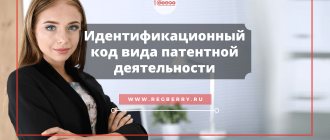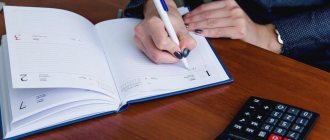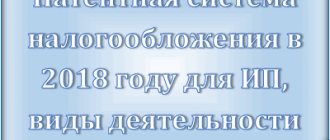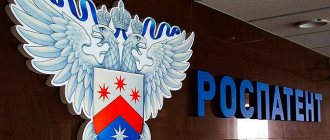In Russia, along with the main tax system, there are several preferential ones. This or that regime is applied in certain conditions, and for many there are restrictions on the types of activities. By skillfully combining these systems, businessmen have a legitimate opportunity to save on mandatory payments. Let's figure out whether it is possible for an individual entrepreneur to combine a patent and the simplified tax system.
What and how you can combine in 2021
After canceling UTII, there are only 4 special modes to choose from:
- STS (simplified taxation system);
- PSN (patent taxation system);
- Unified Agricultural Tax (Unified Agricultural Tax);
- NPI (professional income tax).
It is prohibited to combine the simplified tax system and the operating tax system. The reason is that SNO data applies to the entire business, and not to individual registered activities.
As for SNO for the self-employed (NSE), no combinations are provided for this option.
This leaves only two options: OSN or simplified tax system with a patent.
And due to the fact that PSN can only be used by individual entrepreneurs from the micro-business category, only they will have the opportunity to combine SNO in 2021.
There is also the possibility of using a patent with the Unified Agricultural Tax, but this option is much less common than the simplified tax system + PSN, which will be discussed in more detail later.
Features of combining the simplified tax system and a patent
The patent does not require the submission of any reports, however, in the simplified system it is necessary to submit a declaration. Therefore, applying simultaneously the PSN and the simplified tax system, the individual entrepreneur is obliged to submit this report to the Federal Tax Service. Moreover, this must be done even for those periods when “simplified” activities are not carried out. In this case, a report will be submitted without indicators (zero declaration).
Generate a simplified taxation system declaration online
If you neglect to submit a declaration under the simplified tax system, the Federal Tax Service may impose a fine under Article 119 of the Tax Code of the Russian Federation. It will be 1 thousand rubles - this is the minimum amount that is assigned if there is no tax to pay. And this is, perhaps, the only disadvantage of combining these modes compared to the independent use of PSN.
The advantages of combining these tax regimes are that individual entrepreneurs can optimize their payments. He saves by purchasing a patent in those areas of business for which its cost is lower than the tax under the simplified tax system.
Previously, combining modes had another advantage - individual entrepreneurs had the right to deduct their own insurance premiums. The tax on “simplified” activities could be reduced on them, but the cost of the patent could not, since the PSN did not involve the deduction of contributions. However, starting from 2021, a new rule has been introduced for individual entrepreneurs on PSN - the cost of a patent (several patents) can now be reduced by the amount of contributions.
The advantage of combining the regimes is that if the right to a patent is lost (for example, due to exceeding the limits), the entrepreneur will find himself on the simplified tax system. If he does not first switch to this system, that is, he uses the PSN in its pure form, if he loses the right to it, he will be considered to be applying the main tax regime.
Income limit
According to paragraph 6 of Art. 346.45 of the Tax Code of the Russian Federation, the limit on annual revenue should not exceed 60 million rubles if an individual entrepreneur wants to combine the simplified tax system and the PSN.
Exceeding this value leads to the loss of the opportunity to use the patent from the beginning of the tax period. If the established limit is exceeded, the individual entrepreneur loses the right to apply the patent from the beginning of the tax period.
The tax period is equal to the validity period of the patent. The validity period of a patent can be 1 – 12 months.
If an individual entrepreneur has several patents received during the year, he loses the right to apply PSN for the type of activity for which the income limit was exceeded. Consequently, in this area, the individual entrepreneur will switch to the simplified tax system from the beginning of the tax period
The individual entrepreneur received two patents:
- from February 1 to July 30;
- from August 1 to December 31.
In September, the entrepreneur exceeded the limit (60 million rubles) cumulatively since the beginning of the year. Despite the fact that the excess was in September, the transition to the simplified tax system due to the excess will be counted from August, i.e. from the beginning of the second patent.
This means that the individual entrepreneur must re-calculate the tax base from August 1, take into account income and, if necessary, expenses that were incurred after August 1 under the patent (letter of the Ministry of Finance dated August 7, 2019 No. 03-11-11/ 59523).
Combination practice
Before using the systems together, you need to make sure that for the chosen type of activity a patent will be more profitable than the simplified tax system. The tax service website has a special service for calculating the cost of a patent. It depends on the region, field of activity and scale of business.
If an individual entrepreneur already uses the simplified tax system, he can simply purchase a patent for the desired area. If a different tax regime is applied, then a transition to a simplified tax regime is made. However, this can only be done starting from the next calendar year.
The simplified tax system applies to all activities, and the patent applies to the one for which it was acquired. For clarity, here are a couple of examples demonstrating the combination of the simplified tax system and a patent in 2021.
Example 1
An individual entrepreneur from Moscow provided services under the simplified tax system with the object Income (tax rate 6%) and additionally decided to rent out an apartment that belonged to him. That is, in this example, there is a combination of the simplified tax system for services and the PSN for leasing residential real estate. Its area is 50 square meters. meters, rental cost - 40 thousand rubles per month. The income of an individual entrepreneur for the year will be 40 x 12 = 480 thousand rubles.
When applying the simplified tax system at a rate of 6%, the annual tax will be 480 * 6% = 28.8 thousand rubles. But the cost of a patent for this entrepreneur for the entire 2021 will be 18 thousand rubles. There is a tangible benefit, so combining the modes is justified.
Example 2
A Moscow resident registered as an individual entrepreneur and immediately switched to a simplified system. Then he acquired a retail patent and opened a small (48 square meters) store selling souvenirs. The cost of a patent for 2021 for him was 162 thousand rubles.
Additionally, the entrepreneur decided to sell products via the Internet. The activities of an online store are not covered by a patent, but they can be conducted using the simplified tax system. Since the individual entrepreneur switched to this system in advance, he can open an online store without additional registration. If he had not previously taken care of applying the simplified regime, he would have had to pay taxes on the activities of the online store in accordance with the main system. And wait until next year to switch to the simplified tax system.
Average headcount
This restriction does not have a completely unambiguous interpretation due to the fact that the letter of the Ministry of Finance (letter of the Ministry of Finance dated September 20, 2018 No. 03-11-12/67188) states that the number of employees can be kept separately. Hence the question - how many employees can you hire when combining the simplified tax system and the PSN: 130 or 145?
130 people can be hired by combining the simplified tax system and the PSN.
The basis for this is clause 5 of Art. 346.43 of the Tax Code of the Russian Federation, which establishes that a patent can only have 15 employees.
The limit on the number of employees in the simplified tax system is 130 people and it applies to the entire legal entity or individual entrepreneur, and not to a separate type of activity. (Clause 15, Clause 3, Article 346.12 of the Tax Code of the Russian Federation)
Thus, the situation is as follows - when combining the simplified tax system and the PSN, you can hire a total of no more than 130 people, of which no more than 15 people can work for the PSN, while no one prohibits keeping their records separately.
The individual entrepreneur has a wholesale and retail store, in which the same employee records goods.
The letter of the Ministry of Finance of the Russian Federation dated 07/02/2013 No. 03-11-06/3/25138 indicates the need to take into account such employees also in the combined SNO, in this case PSN.
Thus, care should be taken to ensure that the total number of employees participating in the PSN does not exceed 15 people.
Patent
The patent tax system in 2021 for individual entrepreneurs has more stringent restrictions:
- The PSN must be introduced in the territory of doing business in relation to exactly the area of business that the individual entrepreneur is engaged in. The types of activities for a patent are determined by regional authorities. A basic list of areas that you can focus on is given in paragraph 2 of Article 346.43 of the Tax Code of the Russian Federation. At the same time, there are activities that are prohibited by patent (clause 6 of Article 346.43 of the Tax Code of the Russian Federation);
- the maximum number of employees engaged in “patent” activities is 15 people (total for all patents, if there are several of them);
- annual income - no more than 60 million rubles for all types of patent activity;
- PSN is not applied within the framework of a simple partnership agreement or trust management of property;
- A patent cannot be used when selling goods that are subject to mandatory labeling - medicines, shoes and fur clothing.
Free tax consultation
Residual value of fixed assets
According to this, the Ministry of Finance and the tax authorities have a similar position; the residual value of fixed assets should not exceed 150 million rubles.
Also, in its letter dated 03/06/2019 No. 03-11-11/14646, the Ministry of Finance indicated that only funds that are included in the simplified tax system should be taken into account.
But Article 346.12 of the Tax Code of the Russian Federation does not clearly define this limitation. In addition, based on paragraph 4 of Art. 346.12 of the Tax Code of the Russian Federation, previously, when combining the simplified tax system and UTII, the residual value of fixed assets was determined for the entire enterprise, and not just according to the simplified tax system.
Therefore, in this matter, it is also worth adhering to the established limit, because otherwise, there is a risk of losing the opportunity to use the PSN.
Simplified system
The simplified taxation system can be applied throughout the country; almost any activity falls under it. Therefore, the simplified tax system is the most universal tax system. But there are also limitations to its use. For individual entrepreneurs, the main ones are the limit on the amount of income and the number of employees. In 2021, these limits have been increased and are now:
- income from the beginning of the year should not exceed 200 million rubles;
- the average number of employees is no more than 130 people per year.
Note!
Along with increasing the limits for the application of the simplified tax system, additional tax rates were introduced. If the income from the beginning of the year is 150-200 million rubles and/or the number of employees is from 100 to 130 people, starting from the period in which these indicators were achieved, the individual entrepreneur must pay tax at the following rates: 8% under the simplified tax system “income” and 20% under the simplified tax system “income minus expenses”.
A complete list of criteria for the transition to the simplified tax system and the use of this system is given in articles 346.12 and 346.13 of the Tax Code of the Russian Federation.
Combination of tax regimes for one type of activity in one region
The next restriction is the ban on conducting activities on two aids to taxation (STS and PSN) in the same region for the same type of activity.
This prohibition is described in the letter of the Federal Tax Service of the Russian Federation dated March 28, 2013 No. ED-3-3/1116. This is justified by the fact that the patent is valid within the region as a whole and is not limited to any object or objects.
There is also a letter from the Ministry of Finance dated 04/05/2013 No. 03-11-10/11254, in which the position is the opposite, i.e. the use of simplified taxation system and PSN in one region within one region at different facilities is permitted.
As a result, here is another “slippery” situation in which everything will depend on how the above documents are interpreted, so before applying for a patent, it is worth getting clarification on this issue from your Federal Tax Service.
If for the same type of activity the PNS is used for one object and the simplified tax system for another, but they are located in different regions, then you do not violate any restrictions.
Insurance premiums for individual entrepreneurs with income over 300 thousand rubles.
When the annual income of an individual entrepreneur exceeds 300 thousand rubles, he must additionally pay 1% of “pension” insurance contributions from the excess amount. When combining the simplified tax system and a patent, it is important to correctly determine the amount of taxable income. According to paragraph 9 of Art. 430 Tax Code of the Russian Federation:
- income from activities in the simplified market is taken into account in full, without deducting expenses (regardless of the object used - “income” or “income minus expenses”);
- according to PSN, it is not the actual, but the potential income that is established for the corresponding type of activity in the region that is taken into account.
To calculate the insurance premium, income from activities on the simplified tax system and a patent are summed up.
How to keep records when combining PSN and simplified tax system
Accounting should be kept separately, namely:
- income and expenses;
- property;
- obligations;
- business transactions.
Accounting for income and expenses when combining simplified taxation system and PSN
As for the distribution of income, the question most often arises of how to distribute non-operating income. Such income cannot be confidently attributed to any one of the combined activities.
In such cases, the point of view of the Ministry of Finance is that this type of income cannot be distributed between combined SNOs.
The Federal Tax Service believes that income from such a plan should be taken into account in full in calculations for the simplified tax system.
An example of such income is the sale of a fixed asset (letter of the Ministry of Finance dated January 29, 2016 No. 03-11-09/4088).
Expenses that relate to the business as a whole, for example, office rent, accountant's salary and the like, must be distributed proportionally between both types of activities.
This requirement is described in paragraph 8 of Art. 346.18 Tax Code of the Russian Federation.
The individual entrepreneur combines the simplified tax system “income minus expenses” and a patent. To distribute expenses, he uses the revenue “on payment” received on an accrual basis from the beginning of the year. The indicators for the first quarter of 2021 are as follows:
revenue from the simplified tax system - 7 million rubles;
revenue from PSN - 3 million rubles;
expenses for distribution (salary of an accountant, logistics specialist and office rent) - 500 thousand rubles.
Calculation
Total revenue for the 1st quarter: 7 + 3 = 10 million rubles.
Share of revenue on the simplified tax system in the total amount: 7 / 10 = 70%.
The amount of distributed costs that will be taken into account when calculating the simplified tax for the first quarter of 2021: 500 × 70% = 350 thousand rubles.
Unfortunately, the Tax Code of the Russian Federation does not have a clear rule by which this proportion is drawn up. It is not indicated, for example, what type of revenue accounting to use: by shipment or by payment.
In the case of combining the simplified tax system and UTII, by letter of the Ministry of Finance dated September 29, 2009 No. 03-11-06/3/239, it was agreed to use revenue accounting “by shipment”.
However, PSN differs from UTII in this regard. When working on a patent, accounting occurs in the same way as in the simplified tax system, i.e. upon payment.
For expenses, the cash method is used similarly. In addition, in the above letter the requirement to keep records was presented for legal entities, and not for individual entrepreneurs.
The next question that arises is which billing period to use to calculate the proportion. The problem is that for the simplified tax system the tax period is equal to one calendar year. While a patent can be issued for a month or two, up to 1 year.
It is worth noting that for combining the simplified tax system and the PSN, the procedure for determining the billing period is not described. However, when combining the simplified tax system and UTII, the Federal Tax Service recommended keeping records on a monthly basis, cumulatively from the beginning of the year (letter of the Ministry of Finance of the Russian Federation dated March 29, 2013 No. 03-11-11/121).
Thus, there are two ways out of this situation: act by analogy with the scheme for the simplified tax system + UTII, or develop and consolidate your own calculation scheme in the accounting policy.
Separate accounting of income and expenses
Combining the PSN and the simplified tax system will require maintaining two books: one for the PSN, the other for simplification.
Individual entrepreneurs combining simplified taxation system and PSN are required to keep separate records of income and expenses. If it is impossible to separate expenses when calculating the tax base for taxes calculated under different special tax regimes, these expenses are distributed in proportion to the shares of income in the total amount of income received when applying the specified special tax regimes (clause 8 of Article 346.18 of the Tax Code of the Russian Federation).
Additional criteria
The full comparison also covers other nuances. For example, the territorial aspect is of great importance. The use of a simplified system allows you to operate in any subject of the Russian Federation. A patent is acquired for work in a specific region or municipality (clause 1 of Article 346.45 of the Tax Code of the Russian Federation).
Specific benefits should also be taken into account. Thus, patent holders have the right to apply reduced rates when calculating insurance premiums for employees. In the Pension Fund of Russia, employers on PSN can pay only 20% of remuneration to staff. They were exempted from contributions to the Compulsory Medical Insurance Fund and the Social Insurance Fund of the Russian Federation (part 9 of paragraph 1 of Article 427 of the Tax Code of the Russian Federation). The benefit is allowed to be applied until the end of 2021. It is possible that the rule will be extended.
Why is it beneficial for individual entrepreneurs to combine modes?
In Russia, it is quite common for an individual entrepreneur to apply the simplified tax system and a patent at the same time. The taxation model allows a businessman to significantly save on tax payments to the budget. And the composition of reporting on preferential treatment is minimal. For example, an individual entrepreneur using the simplified tax system submits only one declaration at the end of the year. When the PSN does not provide for declarations at all.
Even the combination of OSNO and patent is beneficial for individual entrepreneurs. This allows you to pay only 6% of income for certain types of activities instead of:
- 13% personal income tax;
- 20% VAT;
- 2.2% property tax.
As you can see, the savings are significant.
Results
An entrepreneur, when starting a business, must decide which taxation system he will use.
The modes can be used separately if only one business area is developing, or they can be combined if several are developing at once. What is more profitable than an individual entrepreneur - a patent or simplified tax system, and possibly UTII or a general regime, is usually determined in advance by calculation. But in the process of carrying out activities, regimes can be changed, however, this should be done strictly according to the rules enshrined in the Tax Code. You can find more complete information on the topic in ConsultantPlus. Free trial access to the system for 2 days.
Actual fiscal burden
It is possible to compare royalties on the simplified and patent systems only using specific examples. In the first case, the calculation is carried out based on actual business income. The total amount is reduced by insurance premiums for yourself and your employees. In the second, the potential profitability and period of application of the PSN are important. Pension, medical or social insurance fees are not included in the cost of the patent.
| Example | simplified tax system | PSN | |
| Income | Net profit | ||
| From April 1, the businessman registers with the state and opens a shoe repair shop in the Aleksandrovsky municipal district of the Perm Territory. Gross revenue by December 31 will be 230 thousand rubles. The costs of conducting commercial activities will be equal to 80 thousand. The entrepreneur will not attract hired employees. | Regardless of the applicable tax regime and place of business, the entrepreneur must pay fixed insurance premiums. In 2021, their size is: 26,545 + 5,840 = 32,385 rubles. Since the payer registers as an individual entrepreneur only in April, contributions will be calculated proportionally: 32,385 ÷ 12 × 9 = 24,288.75 | ||
| Shoe repair is not classified as a preferential area by regional law. An entrepreneur does not have the right to take advantage of tax holidays. The rate will be 6%. The calculation of obligations to the budget will look like this: 230,000 × 6% = 13,800 rubles. Article 346.21 of the Tax Code of the Russian Federation allows all insurance premiums paid by a merchant for himself to be taken into account. Since the amount of contributions to extra-budgetary funds will exceed the tax, it will not be necessary to pay it. The fiscal burden will be limited to 24,288.75 | This object of taxation involves the application of a rate of 15%. The tax base will be calculated taking into account insurance premiums and commercial costs (Part 7, Clause 1, Article 346.16 of the Tax Code of the Russian Federation): 230,000 – 80,000 – 24,288.75 = 125,711.25 rubles. The tax will be: 125,711.75 × 15% = 18,856.69. Total deductions will be: 18,856.69 + 24,288.75 = 43,145.44 | Since the activity will be carried out from April, the cost of the patent will be calculated over 9 months. The exact amount will be determined by the online calculator of the Federal Tax Service of the Russian Federation. When filling out the form, you will need to indicate the number of employees - 0 (letter of the Ministry of Finance of the Russian Federation No. 03-11-12/38 dated 03.28.13). You will have to pay 3,825 rubles for the right to work. Insurance premiums cannot be deducted from the cost of the patent. The total fiscal burden will be: 3,825 + 24,288.75 = 28,113.75 | |
Conclusion No. 3: The low cost of a patent does not indicate a benefit to the regime. To make the right choice, you need to make a calculation.
How to combine PSN with “simplified”? Can these two systems be used simultaneously?
Based on the provisions of Chapter 26.5 of the Tax Code of the Russian Federation, individual entrepreneurs are not prohibited from combining several taxation systems within the framework of their activities. For example, when using PSN, an individual entrepreneur can simultaneously conduct activities that are subject to a different tax regime. In this case, the businessman is obliged to keep records of property, business operations and obligations in accordance with the requirements of the applicable taxation system prescribed by law.









